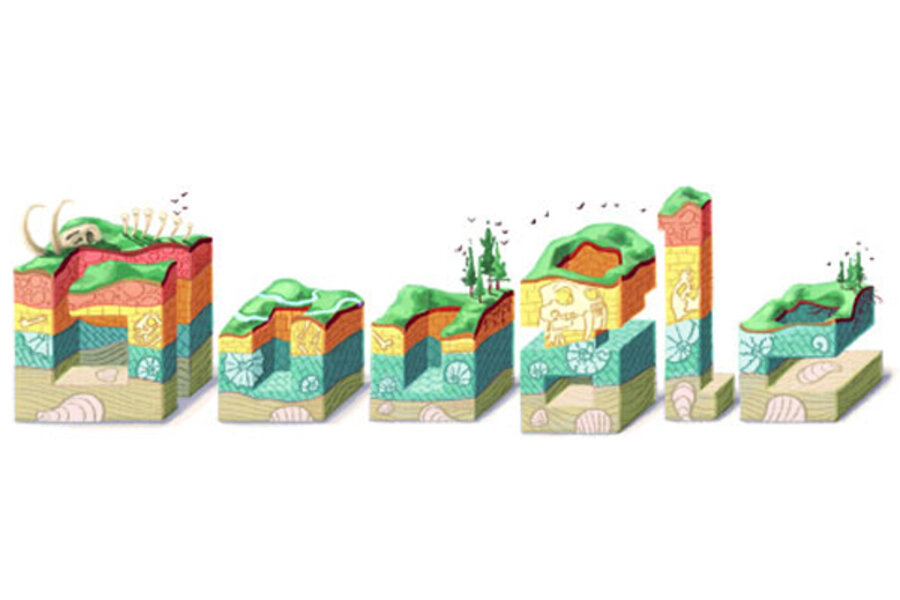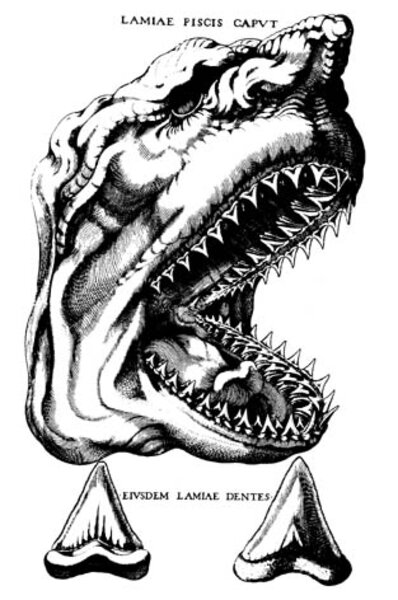How Nicolas Steno changed the way we see the world, literally
Loading...
In 1669, Nicolas Steno rewrote the way people thought about the earth. And today, more than 300 years later, Google excavated his name from the history books for a special Google doodle tribute to the late (and perhaps first) geologist.
Steno was a true Renaissance man. He lived back when scientists didn't stick to a single discipline. He dabbled in medicine, shark dentistry, ancient beasts, and ultimately kick-started the study of geology. Steno simply followed his curiosity, no matter where it led.
Our story starts in Florence, Italy, where Steno, then a budding physician, settled down after years of studying throughout western Europe. He had already challenged several long-held scientific assumptions, researched the changing shapes of muscles, and discovered an unknown body part in the heads of mammals. (He named it after himself, the "ductus stenonianus.")
He moved to Florence in 1665 to join the court of the Grand Duke of Tuscany, and collect for him a "cabinet of curiosity" – basically a room filled with natural wonders. Such collections fell somewhere between a carnival freak show and the basement of a university science department. Men such as Steno gathered, labeled, and displayed animals, vegetables, and minerals of all kinds.
So, when fishermen caught a massive great white shark in 1666, guess who got to dissect its head?
"While examining the teeth of the shark, Steno was struck by their resemblance to certain stony objects, called glossopetrae – literally 'tongue stones' – that were found in certain rocks," writes the University of California Museum of Paleontology in its biography of Steno. (See image above.) "Ancient authorities, such as the Roman author Pliny the Elder, had suggested that these stones fell from the sky or from the moon. Others were of the opinion, also going back to ancient times, that fossils naturally grew in the rocks."
These theories didn't make much sense to Steno. What if fossils came from ancient animals, he wondered. What if glossopetrae looked like shark teeth because they were shark teeth, deposited there when the rocks were covered with oceans?
This sounds pretty obvious to people today. But at the time, some scientists pooh-poohed the idea. If fossils were once bones, then how could they possibly have wound up lodged in rock? How could a solid, like stone, wrap around a solid, like teeth? Those are good questions, ones that bothered Steno as well. He decided that this required further research.
Three years after they caught the shark, Steno concluded that all rocks must have once been fluid and then solidified around and on top of fossils, veins of metal – or even older layers of rock. Since new rock keeps burying and sealing off old rock, then there must be horizontal layers, or strata, throughout the earth.
This idea helped explain a fundamental part of geology: the deeper you dig, the older the stone. "This was the first use of geology to try to distinguish different time periods in the Earth's history – an approach that would develop spectacularly in the work of later scientists," writes the UC museum. This allows modern geologists to make conclusions about the past, based on the depth of the rocks they study. The breakthrough is essential to the study of ancient human societies, dinosaurs, and historical climate change.
It also explains Wednesday's Google doodle. The colorful layers in each letter signify Steno's strata.
But there's another lesson in Steno's work: Never feel constrained by your current job or previous accomplishments. Who would have thought that the son of a Danish goldsmith could make major contributions to multiple, diverse fields? Curiosity has an interesting way of leading people to great, unexpected things.
For more on how science and technology intersect daily life, follow Chris on Twitter @venturenaut.








